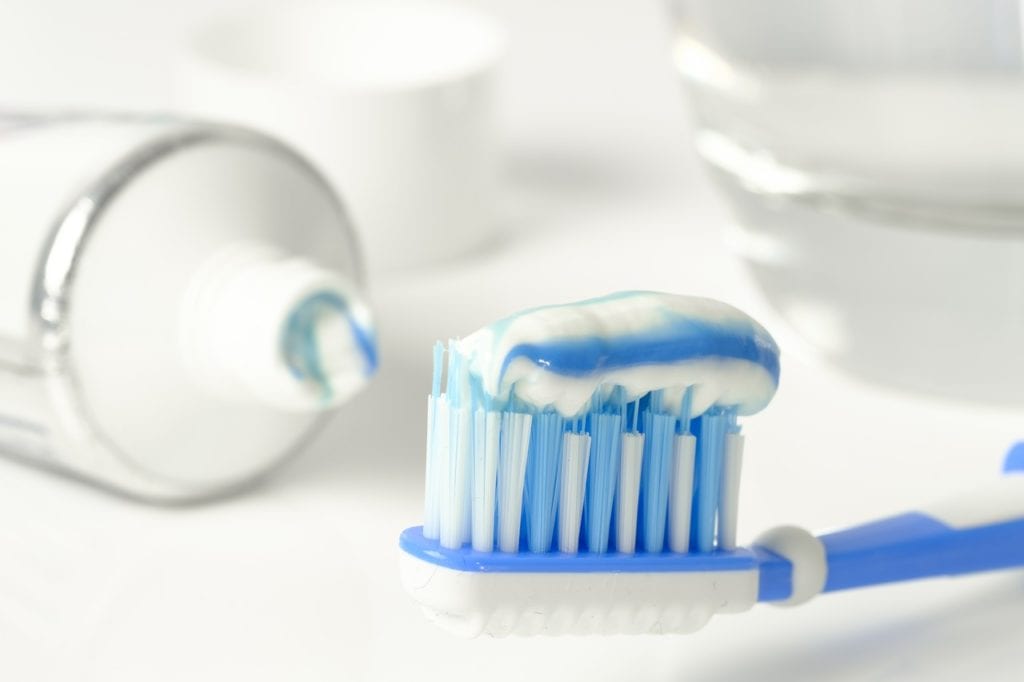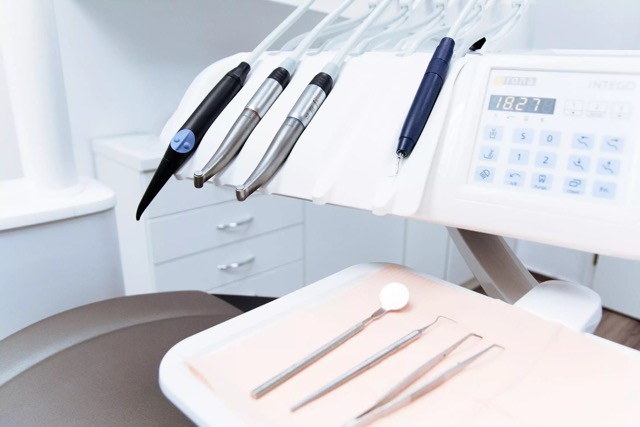Yes! That is correct.
When you schedule dental cleaning in Calgary, you can expect a shining, white smile. And, with that, you can look forward to a lifetime of good health. Good dental hygiene ensures that you prevent a bunch of other ailments down the line. Most people are also unaware that your dentist might just detect and warn you of potential medical problems. Your teeth and oral condition often indicate problems like diabetes, osteoporosis, HIV/AIDS, and Alzheimer’s Disease. On the flip side, not getting regular checkups and teeth cleaning can lead to a range of health problems and diseases. Cancer, diabetes, and heart problems are only some of them. That’s how closely your dental health is connected to overall well-being.
Why Getting Professional Teeth Cleaning is Absolutely Essential
In case you’re wondering, brushing and flossing can remove plaque. But, basic dental hygiene is not enough to get rid of plaque and tartar that accumulates over time. Everyday people don’t have the necessary tools, products, techniques, and expertise that only a certified practitioner can provide.
At around 30 minutes after finishing a meal or snack, the production of saliva in the mouth slows down. As a result, the normal pH levels of your mouth create an ideal environment for bacteria to grow quickly. These microbes survive on the starchy and sugary food particles left in your mouth. After processing the food, they leave a thin, sticky film called plaque. Bacteria also create lactic acid that damages the tooth enamel and results in cavities.
Regular brushing and flossing can remove only the upper layers of plaque. But, you won’t be able to reach into the pockets of bacteria and food debris left behind in the layers of tissues covering the tooth base. For that, you absolutely need dental cleaning in Calgary. The procedure is called prophylaxis and is best scheduled once every six months. Most dental insurance companies cover the cost of basic teeth cleaning so you need not worry about affording it. Typically, a normal cleaning session takes anywhere from 30 to 60 minutes.
Going for Prophylaxis Sessions is a Scary Experience
We understand that! Both adults and kids hate being in that dentist’s chair. The bright lights, whirring noises, pressure in the mouth, and steel instruments are truly discomfiting. Let’s begin by letting you know that getting professional teeth cleaning is a totally pain-free process. If you’re uneasy about getting the procedure, talk to the experts on dental hygiene at our clinic. Have them explain the entire process in detail and you’ll feel a lot more confident. As long as your teeth and gums are healthy, expect that there will be minimum pain. Sensitivity or discomfort only happens in the case of any problems like say, gum disease.
Here’s a quick overview of what to expect.

Step 1 – A Thorough Examination
When you come in for a routine checkup and dental cleaning in Calgary, our dental hygiene expert examines the tiny nooks and gaps between the teeth and gums. She’ll also use various dental instruments including a mirror to examine the dental structure thoroughly. Signs like dark or black spots on the teeth indicate cavities and inflamed gums signal gingivitis or gum disease. If needed, the dentist will come in to examine you and provide the necessary recommendations. If you have a healthy mouth, the hygienist will proceed with cleaning. You’ll have time to ask questions about the process and talk about any concerns you may have. Professionals specializing in children’s dentistry know how to manage kids and create a friendly, non-threatening atmosphere.
You Might Need X-Rays and Diagnostic Tests as Part of the Examination
As part of the examination, your oral care practitioner will likely take digital X-rays of the mouth, teeth, and gums. These diagnostic tests conducted before the dental cleaning in Calgary are essential to detect problems that are not visible to the naked eye. Aside from decay and gum problems, dentists can also identify:
- Cysts and tumors
- Bone erosion
- Abnormal movement of the teeth
- Any other unusual conditions
Tissue or periodontal probing is also a part of the first step. Using special tools, the dentist will check for the depth of the gum pockets, which should ideally range from 1mm to 3mm. If the depth is higher, that’s an indication of tooth disease.
Precautions to Follow Before a Teeth Cleaning Session
At the time of scheduling the appointment, you’ll want to discuss the procedure in detail. Your dentist will check if you have heart trouble, liver disease, or AIDS. If you’re taking any blood thinners or any other medication that can weaken the immune system, do let the professional know. You’ll also answer questions about any artificial implants that you might have had in the past. Or, any health problems that have come up lately. In case you’re nervous about the teeth cleaning procedure, ask about the option of getting sedation dentistry, so you remain comfortable all through. Under the directions of the dental hygienist, you could also consider taking over-the-counter pain medication beforehand.
Step 2 – Removing the Buildup of Plaque and Tartar
When you arrive for the dental cleaning in Calgary, the hygienist will begin by using a scaler to remove tartar. This layer typically accumulates around the gum line and in the gaps in the tissues holding the teeth in place. Expect to hear scraping noises and there’s bleeding only if you have gum disease. Around 80% of patients have some amount of gingivitis, so it’s not a cause for worry. If needed, the professional may use a high-powered electric brush or an ultrasonic scaler, which is more effective in getting all the tartar. Ultrasonic tools work quickly to remove larger sections of tartar. That’s because they use vibrations and spray the surface of the teeth with mists of cool water to remove the debris alternating between the processes. Since the device works constantly, you can complete the session in a shorter appointment.

Step 3 – Brushing the Teeth with a Gritty Toothpaste
Dental hygiene professionals use a high-grade toothpaste, which smells and tastes much like the products you normally use. You’ll even get to choose the particular flavor you like. However, these brands have a gritty texture that can wear away the enamel if used too often. For this reason, only certified dentists may use it on the bi-annual sessions that you come in for. Later, an air polisher removes the remaining paste and gives your teeth a smooth and shiny appearance.
Deep Cleaning in Case You Have Gum Disease
In case you have gum disease that is more severe, the dental cleaning in Calgary will include more extensive prophylaxis. Accordingly, you’ll need root planing that extends below the gum line. Usually, this procedure needs anesthesia and you might receive a topical gel to take away the discomfort. Alternatively, the dentist may choose to use an injection to numb the area.
In case you’ve been noticing any of the symptoms below, know that the dental hygiene specialist will likely recommend deep teeth cleaning.
- Bleeding gums when you brush and floss
- Redness or swelling in the gums, the tissues may feel achy
- Changes in the bite
- Teeth seeming loose or shaky in the gums
- Bigger gaps between the gums and teeth root
- Bad breath and taste in the mouth
Expect that a deep cleaning session will take longer and may last for a couple of hours. In case you have more damage, the oral care expert might ask you to come in for multiple appointments.
Step 4 – Professional Flossing to Remove Remnants of the Cleaning
The next step in your dental cleaning in Calgary is flossing and is similar to what you do at home. The professional will take care to remove all the remaining plaque and tartar in the gums. You may also receive directions on the particular spots you normally miss when you floss. Be sure to target those sections properly to avoid future problems.
Step 5 – Rinsing to Wash Out Debris & Application of Fluoride for Teeth Strengthening
Once the prophylaxis and flossing are done, the hygienist moves on to rinsing out your mouth properly. Typically, the mouthwash contains fluoride that helps strengthen your teeth. Fuoride also helps prevent cavities and dental decay in the future. Alternatively, you’ll wear a mouthpiece or tray over your teeth for around one minute. This tray contains fluoride foam or gel. Once it has had time to work, the dentist will flush out the oral cavity with water.
Do keep in mind that the need for fluoride treatment depends on the mineral content in the drinking water provided in the area where you live. Many residential neighborhoods have fluoride-rich water, so you won’t need fluoride treatment at the clinic for dental cleaning in Calgary. Further, this step is needed only if you have a moderate-to-severe chance of getting cavities. Some practitioners choose to use a fluoride varnish, instead, which is applied using a brush. Since the coating hardens right away, you can eat and drink afterward.
Step 6 – Final Inspection to Ensure Complete Dental Hygiene
Once the teeth cleaning process is complete, the dentist examines the entire oral structure carefully. They’ll make sure you can chew properly and there are no traces of cavities. By checking the X-rays once more, the expert practitioner for dental cleaning in Calgary confirms that your teeth are aligned properly. A final examination is also necessary to check that your bridges, dental crowns, dental veneers, and fillings are intact and secure. In case any additional treatments are needed, the dentist will talk to you about getting them. If you need any other information, you can ask questions.
Additional Steps as Needed
Before you leave, the dentist will talk to you about the right way to maintain dental hygiene. In case you have gum disease, practitioners apply antibiotics to the affected areas. The medications used are slow-release, which means that they work gradually over the next few weeks. If needed, you might have to come in for a follow-up to check that the healing is progressing well. In case you need more treatment, you’ll receive referrals to specialists and you can get appointments with them.
After-Care of a Dental Cleaning Session
You can expect that your gums may be somewhat tender and inflamed after the prophylaxis. For this reason, the dentist will recommend that you avoid very hot or cold foods for a couple of days. Depending on the type of cleaning you’ve received, you may have to schedule another appointment in four to six weeks for a checkup.
People Tend to Put Off Teeth Cleaning Appointments
Most people don’t take the need for prophylaxis seriously and tend to delay getting an appointment. It is easy to put off getting treatment until the point where you start to develop sensitivity, pain, and cavities. Or, even difficulty in speaking and eating. Prevent all possible discomfort by scheduling a session for a dental cleaning in Calgary, every six to twelve months. A complete examination can help you prevent not just oral problems but also other health problems later in life. A sparkling smile to match your personality is an added bonus.
Stop by at our Southcentre Dental clinic in Calgary and spend some time chatting with our expert doctor, Dr. Jennifer Silver. She’ll explain why getting regular cleaning is important and how to care for your teeth and gums at home. Ready to schedule an appointment? Call us at this number: (403) 278-1215. If you would prefer an email with responses to your queries, add the necessary contact information on the Contact page on our website. A team member will get back to you soon.
References:
